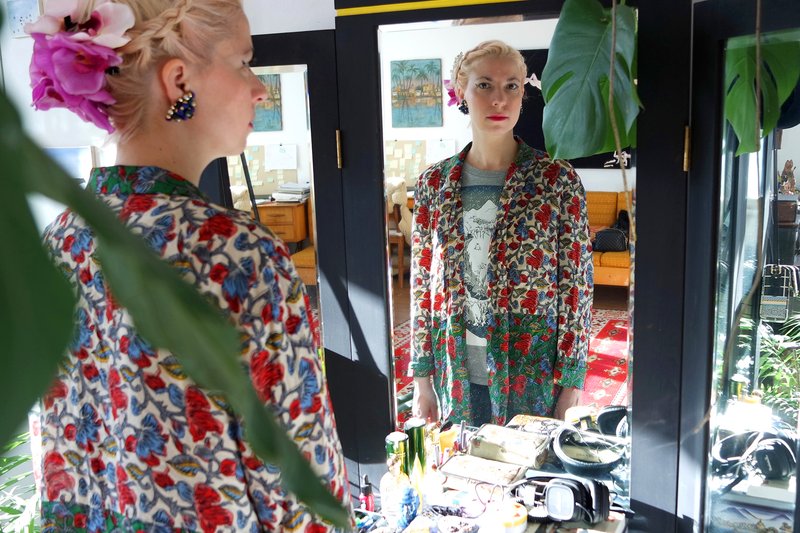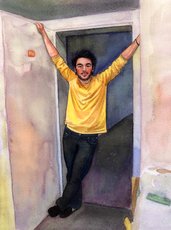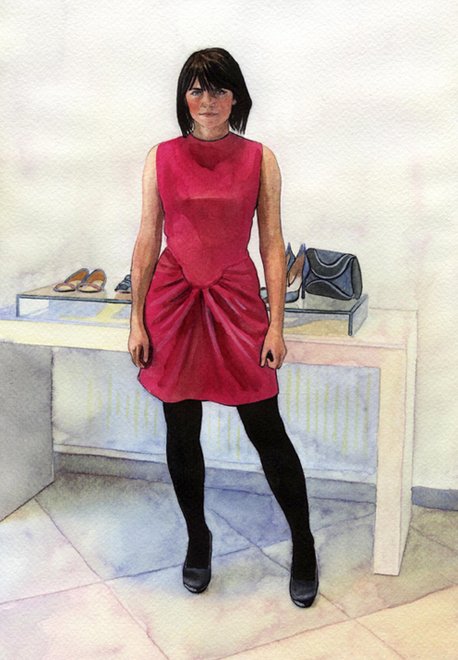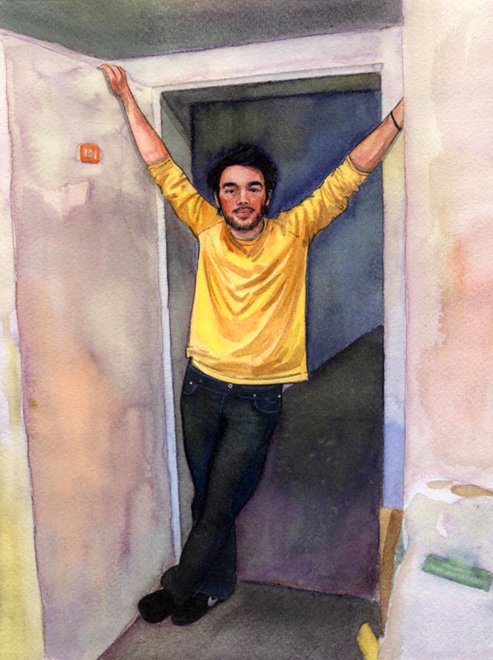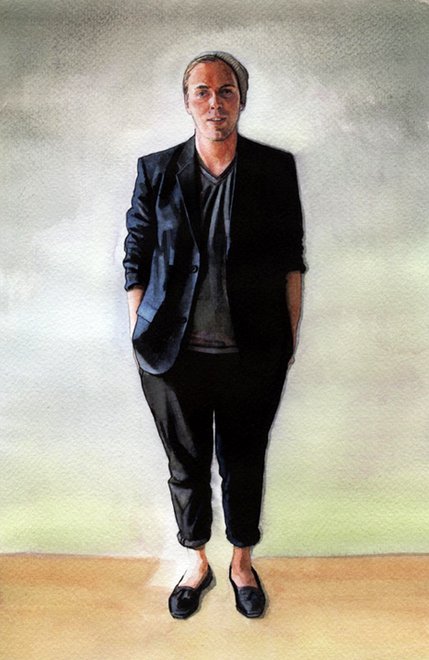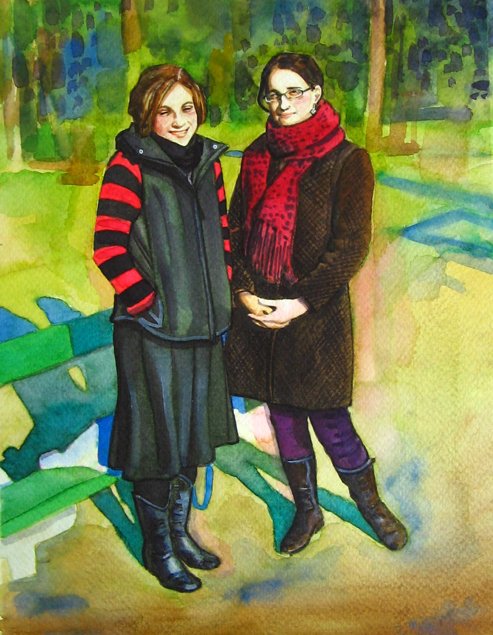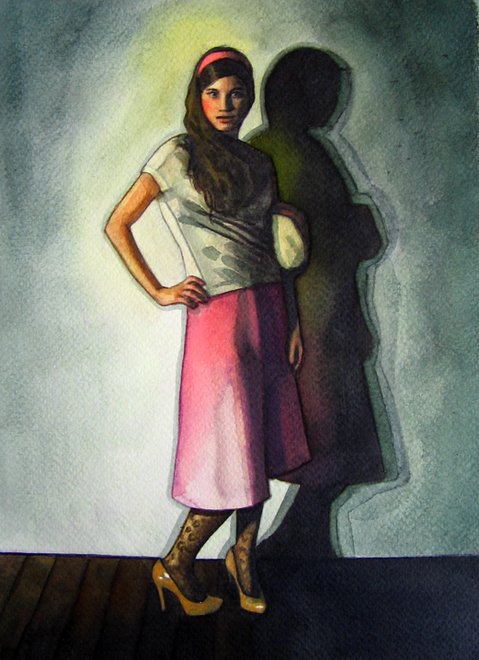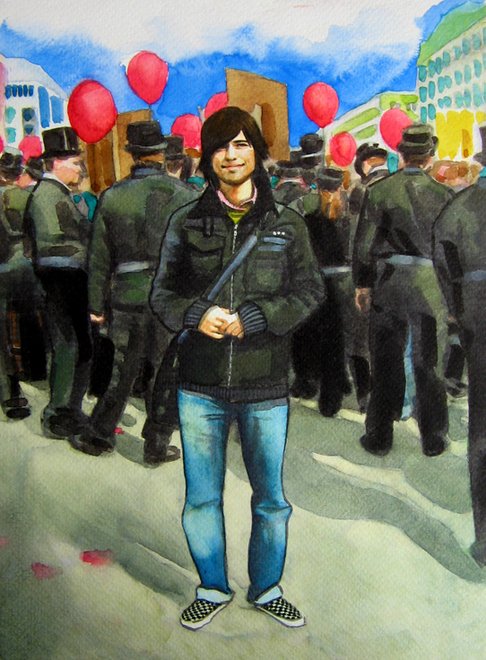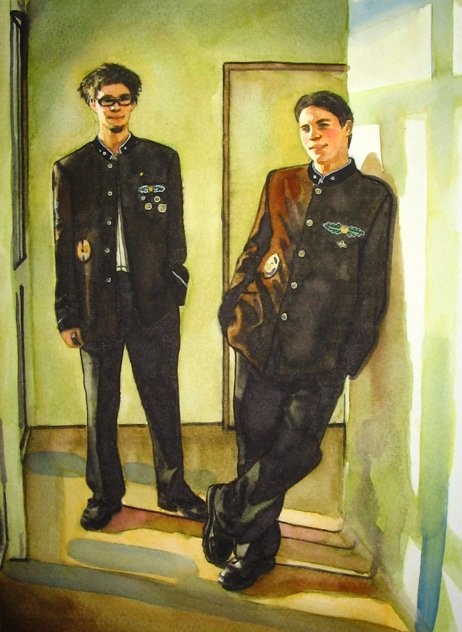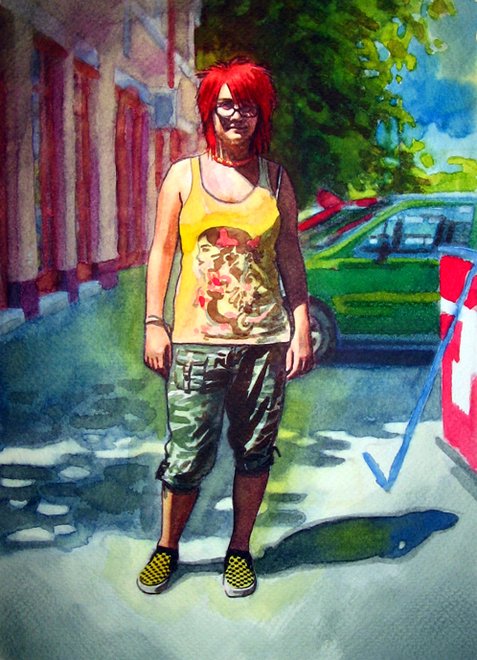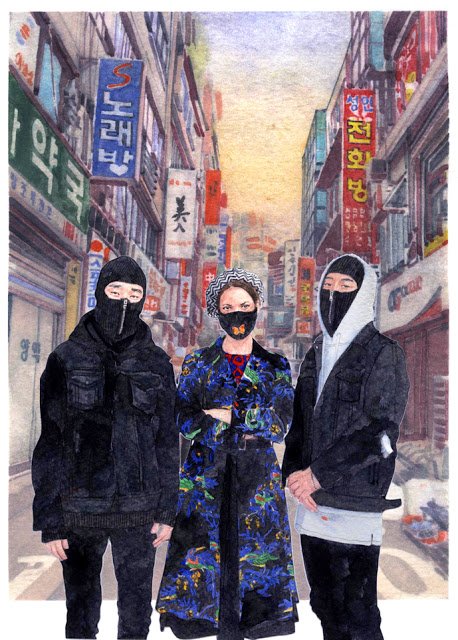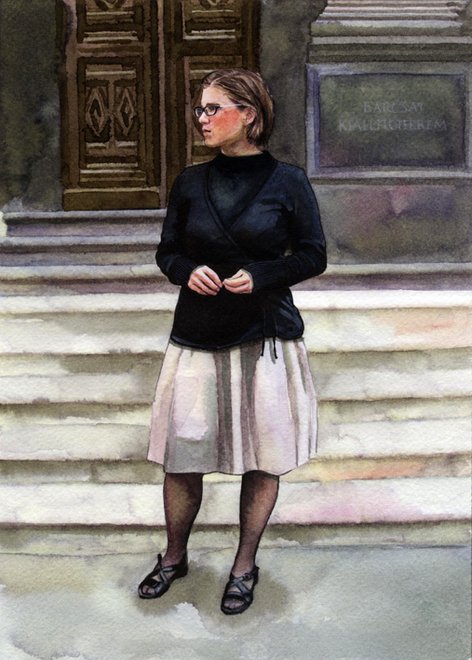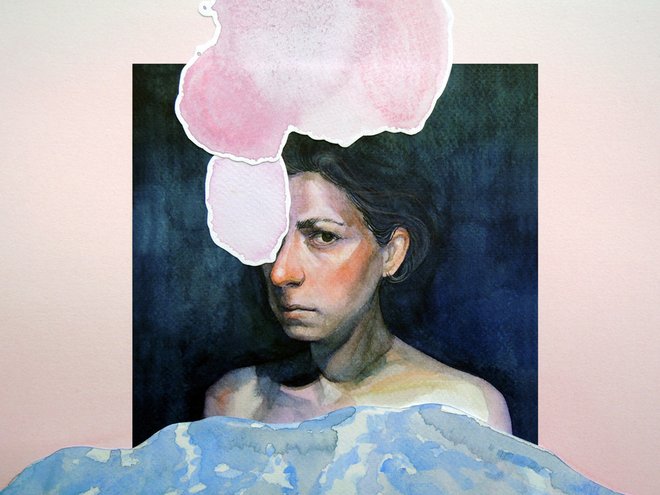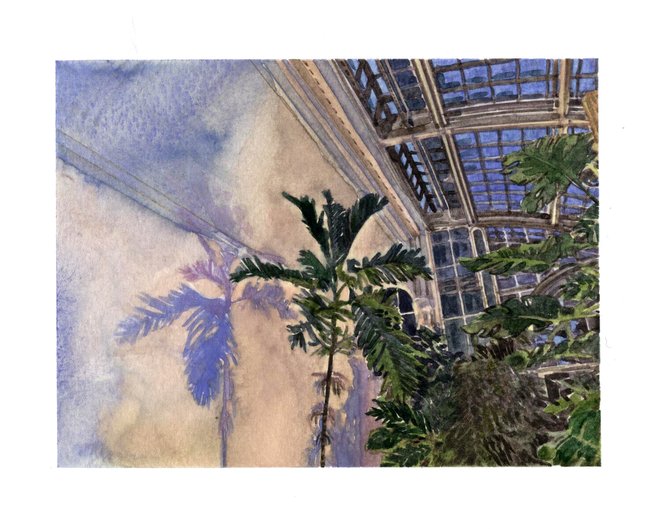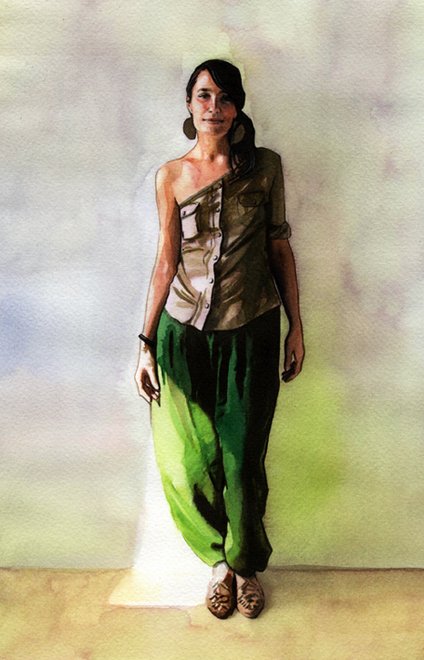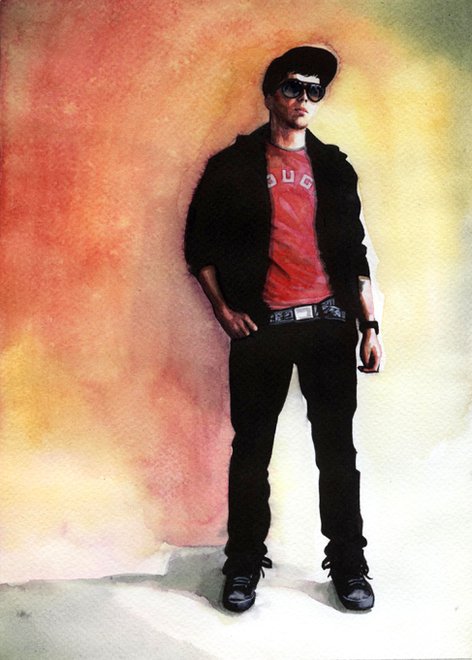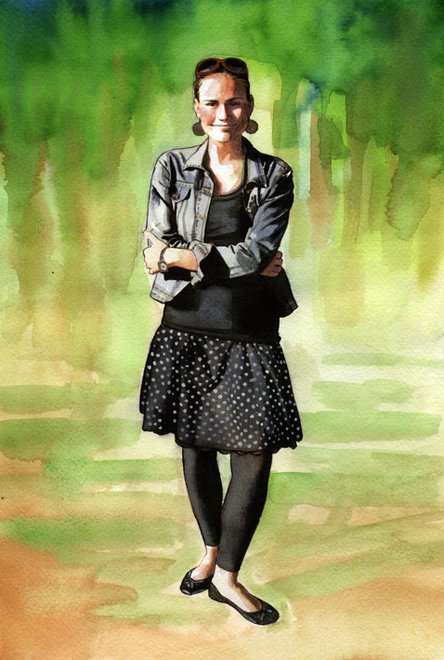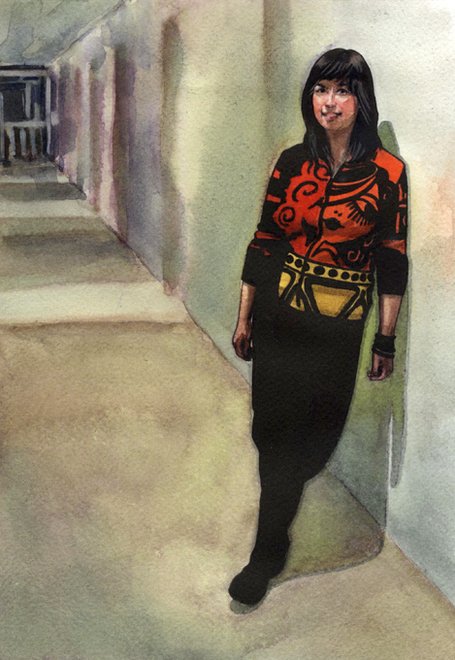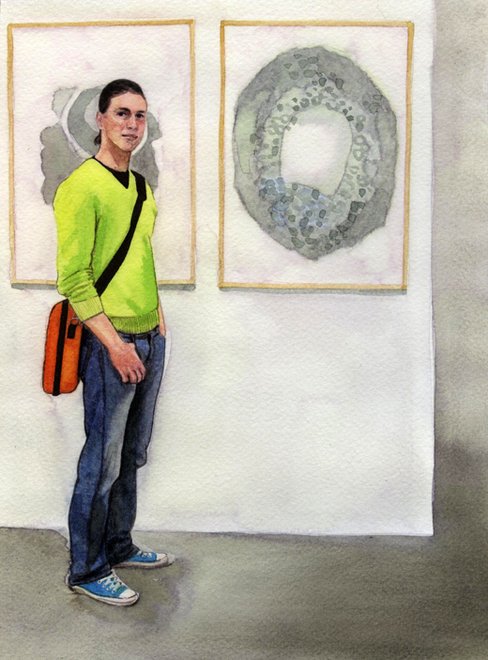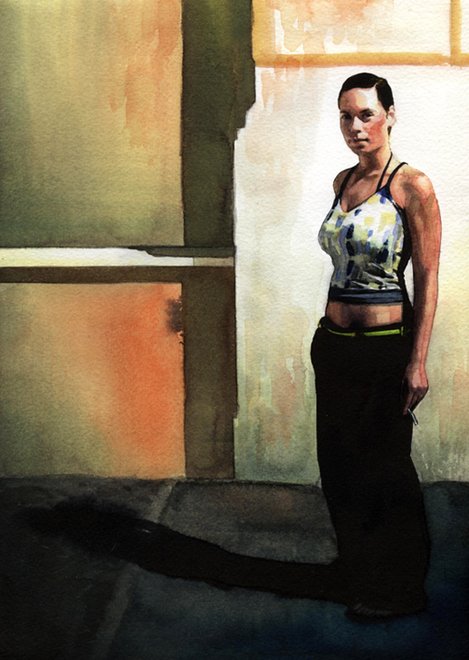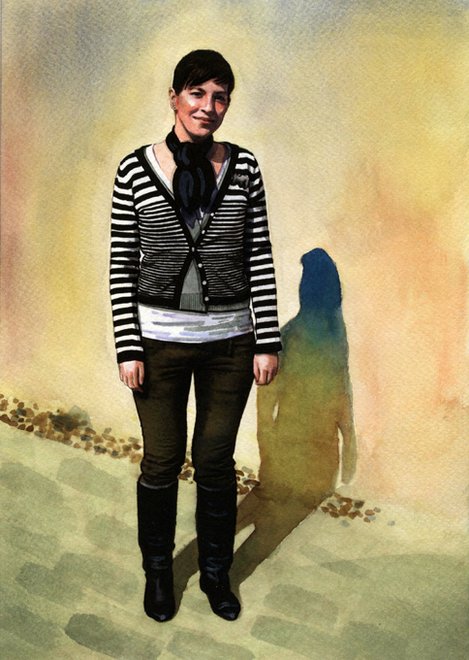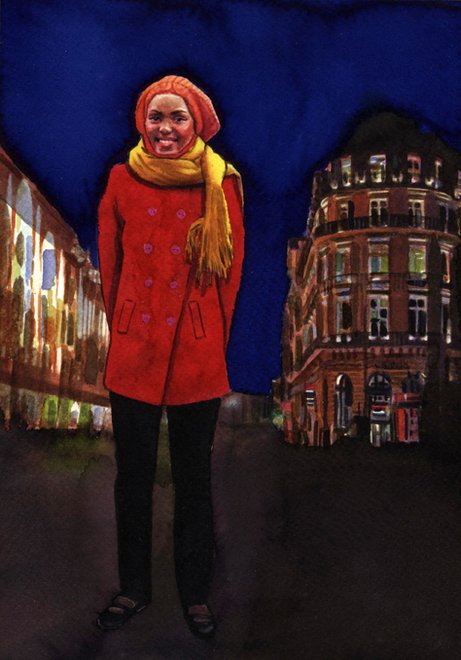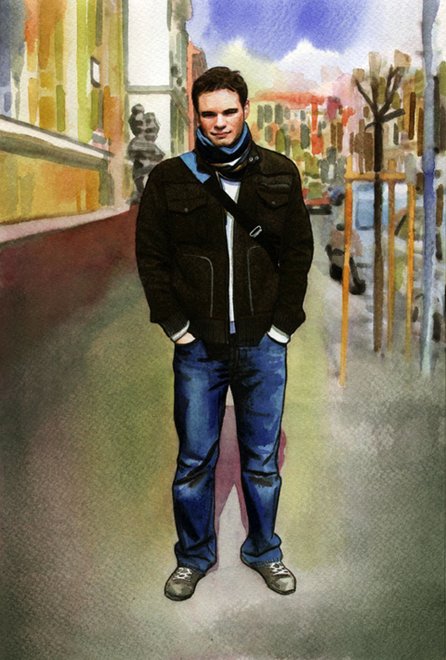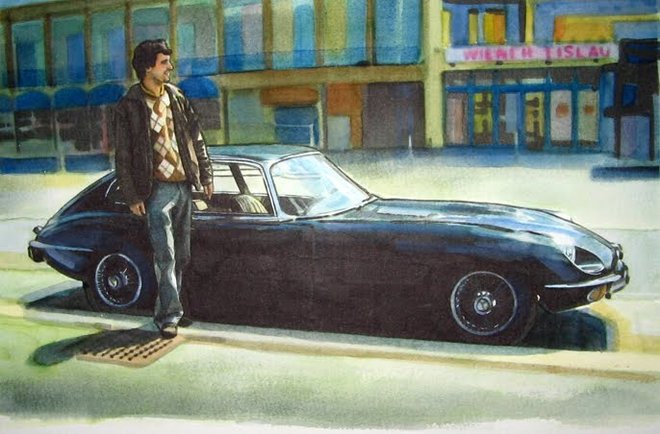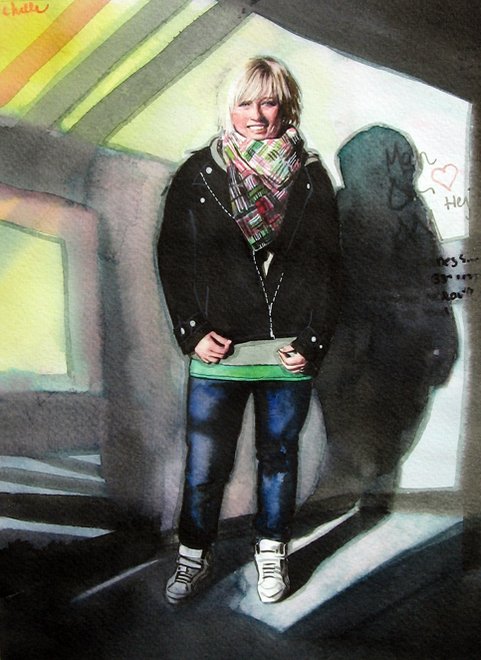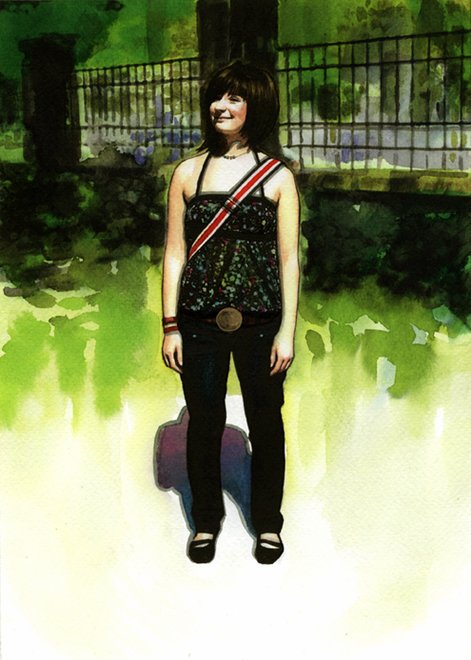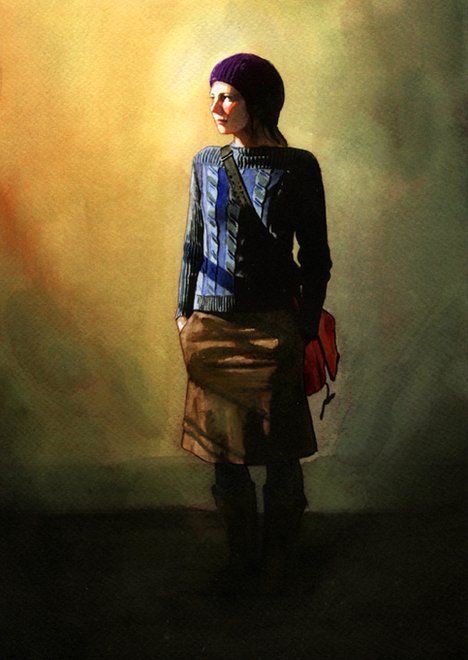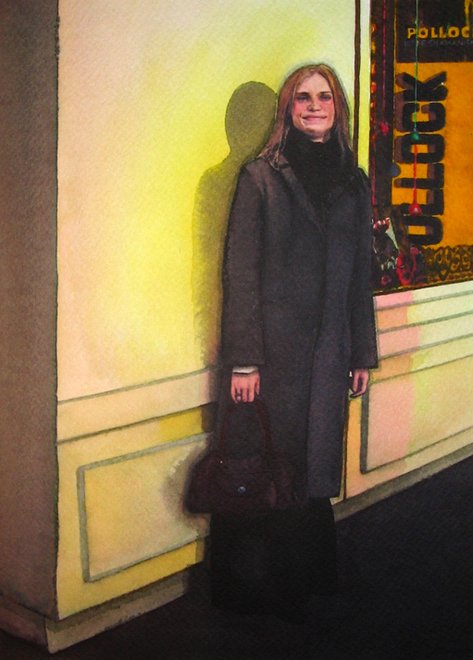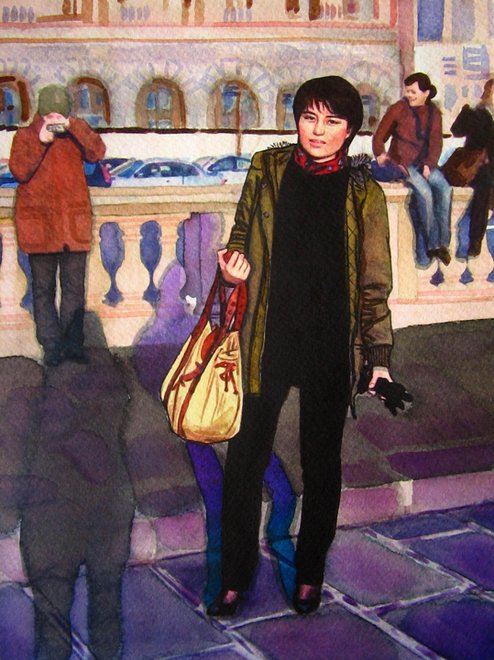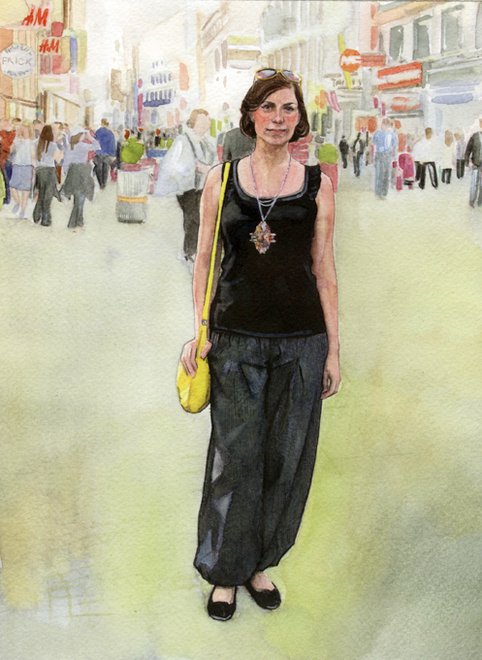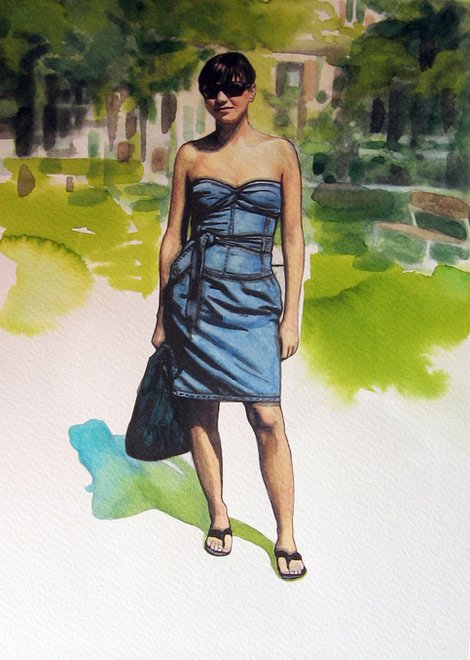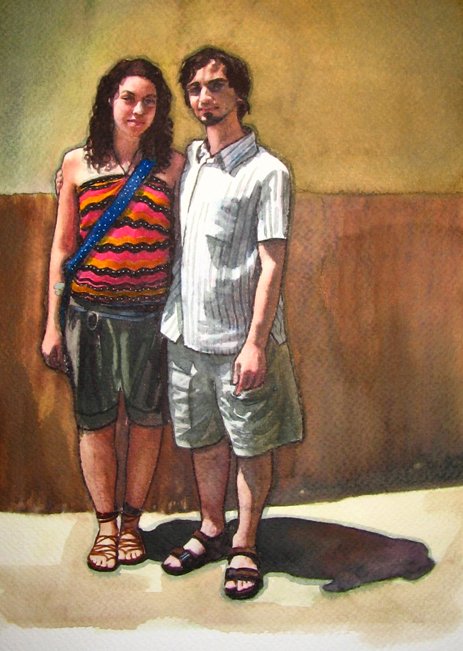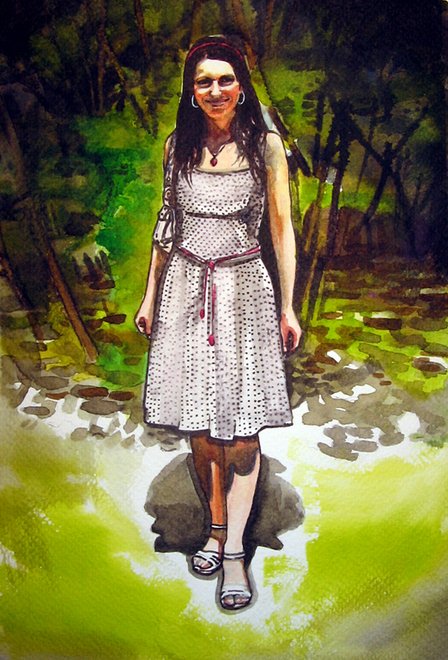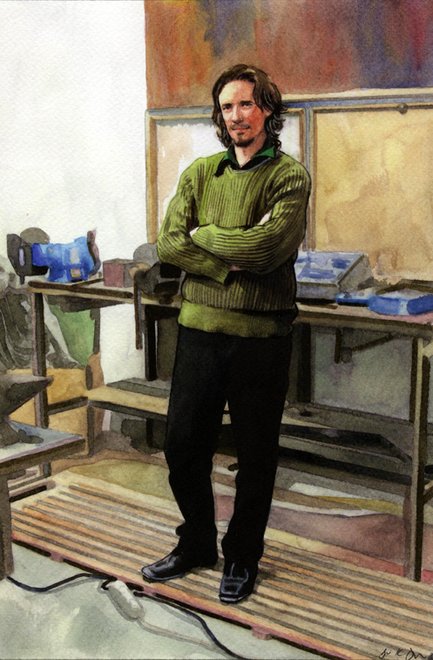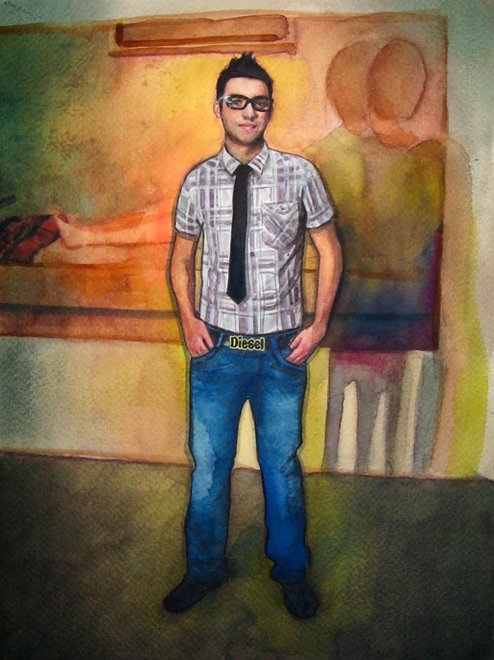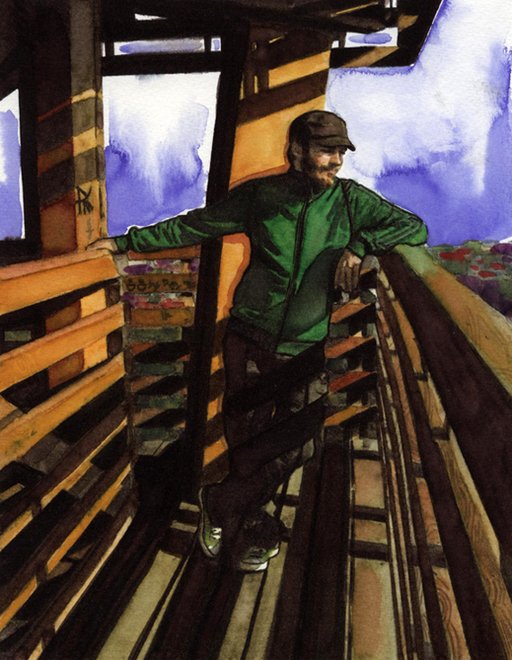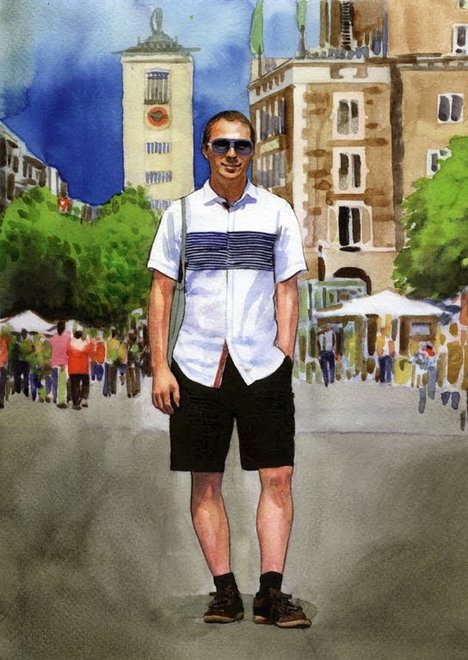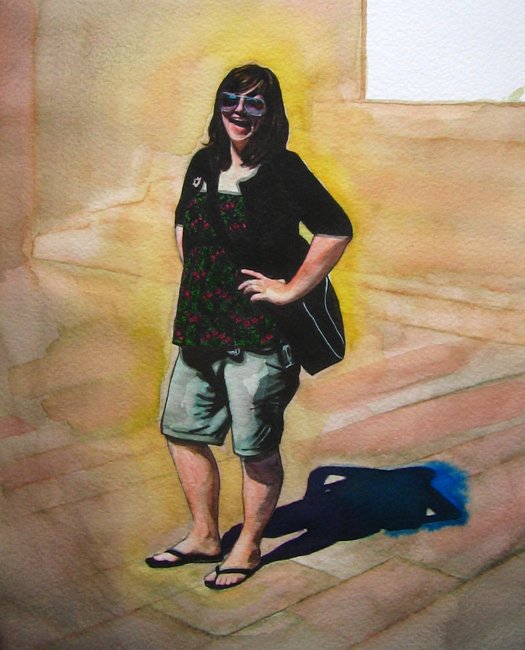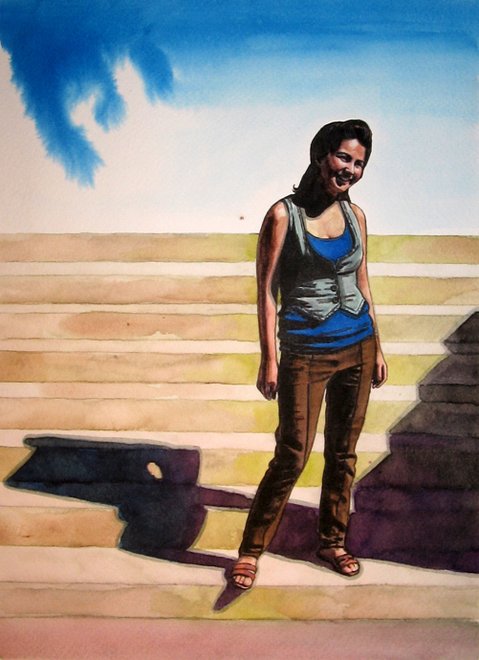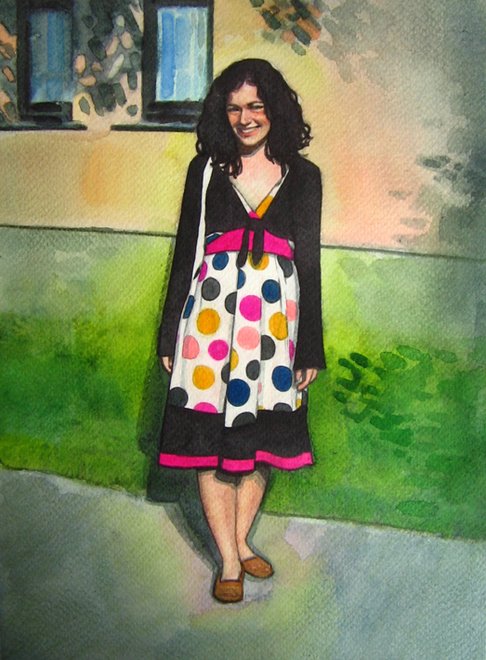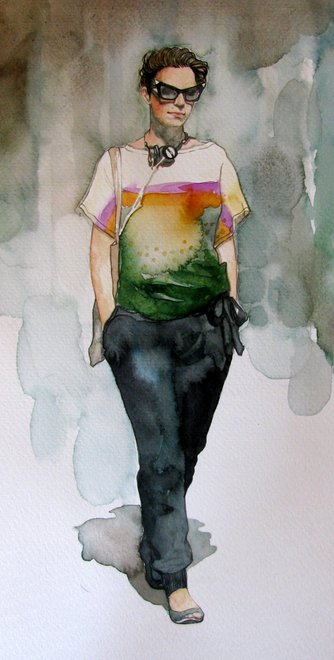Streetfashion in watercolor
Each day 80 million photos are posted on Instagram. As a counter-concept, so to say, Klára Petra Szabó from Hungary runs a – painted – street style blog. In this interview she reveals why she is obsessed with her ideas and how a wrong style under communism could end up with the police being called to scene. She also gave us a few exclusive tips for planning a city trip to Budapest.
Lisa Peres: Street fashion – you don’t make photos, you paint it. How did you come up with this idea?
Klára Petra Szabó: Nine years ago a photographer stopped me on the street and wanted to take a picture of me for her street style blog. Back then I had no idea what that was. Only later I discovered Hel Looks and The Sartorialist – and I found it great. At that time street style blogs were a pretty new thing. I wanted to make an artistic interpretation of such a thing.
How do you choose your street models?
Most are students, neither particularly stylish nor extremely fashionable. But their look is still exciting in my eyes. I don’t try to achieve a one-to-one reproduction of their appearance, rather I try to capture their look and feel. My pictures are more than just portraits, and my fashion blog is a constantly growing archive. Between 2007 and 2009 I painted more than 100 pictures. The series has been exhibited quite often, for example in the United Arab Emirates, the Netherlands, Estonia, Austria, and Hungary.
"In 50 years my blog will be totally retro, and in 100 years unique!"
Do you make a photo first or do you paint live on the spot?
First I take a photo, and then I paint. I could paint live, but it is easier to take photos of people so they don’t have stand around for hours on the street. The size of the pictures is 21 x 30 centimeters, and I paint with watercolors on paper.
Do you ask people about the stories of their clothes?
They rarely had one, so I limited it to simple questions like where they bought their clothes.
Do you get requests for an “old style” portrait?
Not really, but many years ago, during my Krinzinger artist residency in Vienna, the Austrian artist Eva Schlegel and the architect Carl Pruscha asked me to make a portrait of them. They were really nice, and I really enjoyed painting them. I still paint portraits, but typically private ones just for me – so please contact me if you are interested in one! (laughs)
On Instagram 40 billion photos have been shared and 80 million are posted on an average day! (as of Jan. 2016, source: socialmedia-institute.com) Did you want your street fashion blog to have a metalevel that returns value to the depicted?
Yes, that’s the point – apart from the fact that I am a better painter than photographer. I need about a week for a painting. I invest about 20 to 25 hours into a picture – that’s naturally a completely different work effort. Time is an important aspect in my blog project. In 50 years it will be totally retro, and in 100 years a unicum. When you look at it this way, the meaning of this series will change over the years to come.
"Clothing has much to do with identity, social status, and culture!"
How did you become an artist?
I am a girl from the countryside and pretty patriotic. I grew up in Hódmezővásárhely, a city in south-east Hungary close to the Romanian-Serbian border. I began my art studies in a sch
ool in Szeged, then I studied applied arts and a master’s program in design in Sopron. In the past years I participated in a total of 11 artist residency programs, alternating between Japan, England, South Korea, Estonia, and Austria. Changing places is very important to me as I can collect new inspirations. But my base is Hódmezővásárhely – I have my own studio there, I can hide there and concentrate on my work.
What’s a day in your work life like?
Each day is different. Typically, I begin painting in the afternoon or evening. I like to work at night, when nobody disturbs me. I paint a lot and do it obsessively – often I paint until the break of dawn, especially in the summer.
Why so much fashion?
People don’t dare to look different in my little hometown. During communism people who looked different were even forced by the police to assimilate with the masses. The “others” were a danger to the system because they harbored individual intentions. Today, more than 25 years after the end of communist rule, most people are still afraid to have a unique appearance; it is a type of camouflage. Clothing has much to do with identity, social status, and culture, which interests me a lot as an artist.
How does the current political situation in Hungary affect your work?
The Hungarian art scene is very frustrated. It is very hard to survive just making art. Unfortunately, most artists do not provide mutual support for one another. Because of competitive jealousy. That’s why I live on the countryside and often abroad. The other problem is that there are only a few collectors of contemporary art in Hungary. These few always buy from the same galleries and artists.
How often do you travel to the Austrian capital?
Three to four times per year.
Do you have favorite places in the city?
Yes, I do. The Palm House and the Desert House in Schönbrunn, the Imperial Butterfly House, and naturally also the Naschmarkt.
What don’t you like about Vienna?
I like everything! (laughs)
How does Budapest see Vienna? Is it like the “sleepy aunt”?
My mother always says that Vienna is a “jewelry box”. Very clean and everything is super organized. People seem to be less stressed than in Budapest and laugh on the streets.
Which art spots do you like in Vienna?
Galerie Krinzinger makes quite exciting exhibitions. I’ve visited the Museum of Natural History often. I’m really enthralled by the mineral collection. There are a lot of good off-spaces and galleries in Vienna.
What is better in Budapest than in Vienna?
The beer is cheaper in Budapest, and the wine is better. Just kidding! Budapest is wilder, crazier, and more chaotic. The Hungarian chaos can be great inspiration in a certain way! (laughs)
Thanks for the interview!

